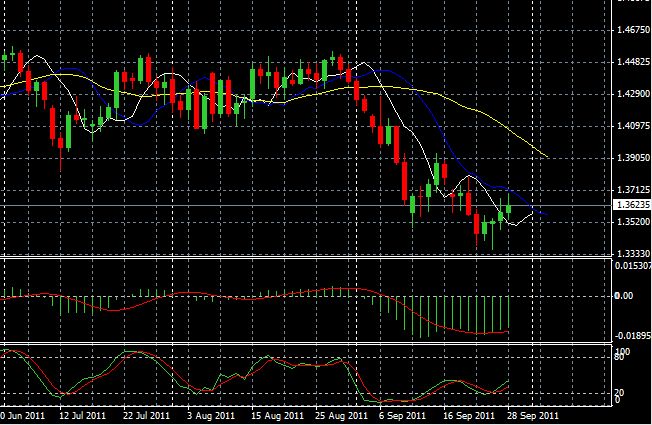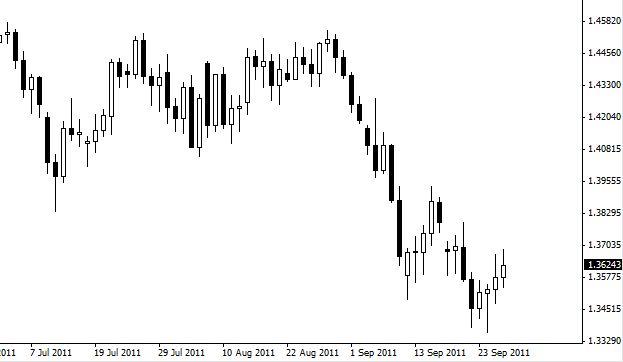- What is price action?
Price action is the behavior of the price of a specific currency, commodity, stock, or other security over a specific period of time. All financial markets display the price movement of a security over varying periods of time on price charts. The price action on a price chart reflects the aggregate belief of all market participants about the value of a security’s price during the specified period of time reflected by the price chart.
Price action analysis allows you to see exactly what is happening in any given market at any given time because price action is the visual trail of the supply and demand situation of the given trading instrument over a specified period of time. A chart’s natural price action reflects the expectations and beliefs of all market players; the bigger more informed players obviously leave a more noticeable trail, so by analyzing the behavior of price over a specified period of time we can make an educated guess as to what those “in the know” are doing in the markets.
- Trading Forex with price action strategies
Forex trading with price action is the application of price action analysis to the forex market, or more specifically, to a forex currency pair. Essentially, what this means is that you can use simple price action setups to trade the Forex market, you do not need to use indicators or trading software because the market generates its own entry signals via price action. Certain price patterns re-occur in the markets and can be used to develop a high-probability trading system or strategy. Price action setups can be used to trade any financial market; however the forex market has the deepest liquidity and lowest startup costs as well as widest accessibility of any financial market, for these reasons and more it is the most popular market today among retail traders.
- Why trade the forex market with price action vs. other methods?
Price action trading has many advantages over most other methods and virtually no disadvantages. When you trade the forex market with a “clean” or indicator-free price chart, you are getting an uninhibited view of the movement of a currency pair’s price action. This is in direct opposition to many indicator-laden trading systems and strategies that essentially cover up the most important data that a market provides; price action. Having this uninhibited view of a currency pair’s price action allows you to make clear and accurate decisions about the possible future direction of a particular forex currency pair via price action setups, or patterns.
Price action setups and patterns give you an easily recognizable and high-probability edge due to the repetitive behavior of the forex market; this edge is clean, logical, and less haphazard than any other trading edge out there. Once you properly learn how to spot and trade price action setups, you will develop a refined market perspective that will allow you to trade the market only at the times you see a high probability price action setup present. Viewing the forex market from this clear and logical perspective also works to positively influence your trading psychology by keeping your charts and your mind clear and uncluttered from any unnecessary or overly-complicated indicators or trading software.
- Price action is the foundation for all technical analysis.
The ability to interpret price action; the dynamics of a market’s price movement, is necessary to correctly understand all forms of technical analysis and improves your ability to utilize them. Essentially, price action analysis is the foundation which you should build your understanding of technical analysis upon because the movement of a security’s price over time is the single most important piece of information in any financial market, and it is also the information from which every other form of technical analysis is derived.
Trading the forex market, or any market, with simple price action analysis, allows you to accurately enter into trending markets, consolidating markets, quite or volatile markets. It is this flexibility of price action, combined with the fact that it is a clear and logical trading strategy which makes use of first-hand market data (price), instead of second-hand data (indicators), that makes price action analysis a widely traded strategy by professional traders and institutions all over the world.
- Price action trading is clear and not messy or confusing
Here’s an example of what I consider a “messy” indicator-ridden chart:

Here’s an example of a clean price action – only chart:

It’s clear that the price action only chart is easier to look at and thus easier to read and interpret. There is just no reason to trade with messy charts when you can trade with clean and clear price-only charts.
- How can understanding price action trading help you become a better trader?
Understanding how to trade the Forex market with price action can help you become a better trader because you will know how to read and trade the natural price dynamics of the market. Once you understand how to read and trade the natural price dynamics, or price action of a market, you will have a solid foundation on which you can build an effective trading strategy. No matter what trading strategy or system you end up implementing, knowing how to read and trade off the natural price action of the market is only going to make it more effective.
Most successful traders have developed their discretionary price action trading skill at least to some degree of proficiency. This is because no matter what you read on the internet or elsewhere, you have to know how to read a market based on its price movement, and interpreting and using price movement is not an exact science, no matter how much certain Forex “robot” system sellers want you to believe it is. Thus, by learning how to trade simple price action strategies in the market, you will be developing your discretionary price movement analysis skills, and these skills will improve your overall understanding of how markets ebb and flow and when the best time to enter and exit them is.
Once you are armed with the knowledge of how to read and utilize the raw price action of a market, you will be able to directly apply it to your Forex trading strategy, or you can simply trade price action as a stand-alone method. Indeed, many traders end up gravitating towards raw price action trading once they become exhausted from trying to trade messy indicator-based methods that seem more confusing than anything else. It’s a good idea to get started learning about simple price action trading concepts today if you don’t already have a solid understanding of them.
Nial Fuller can be contacted at Learn To Trade Forex
Last edited by a moderator:
